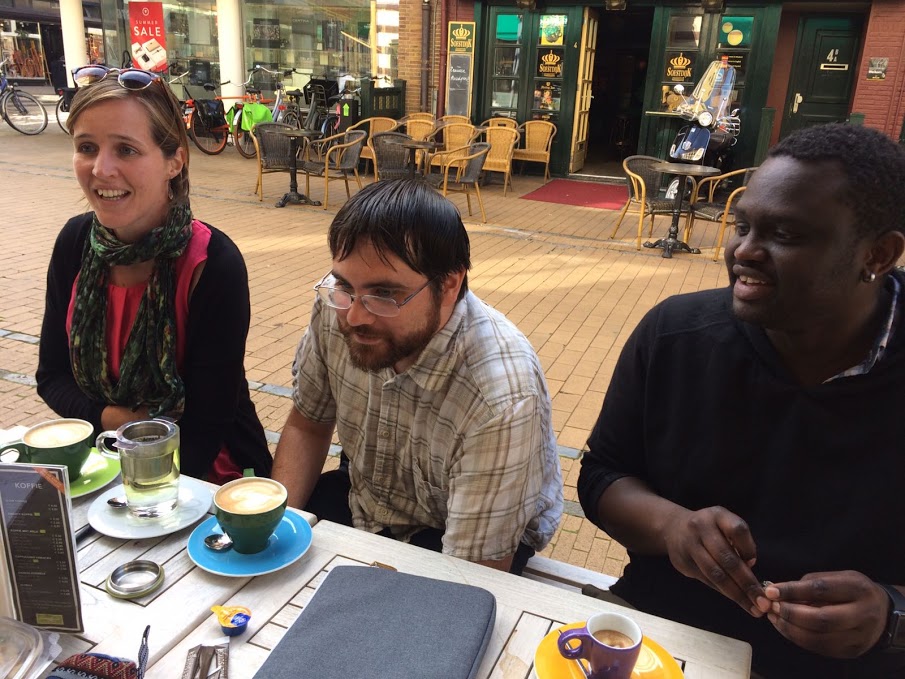Editor’s Note: This is part of a series of short blog posts about the bioethics summer school in Groningen, the Netherlands, which is focused on the role of family in the delivery and consumption of health care. Look for others in this series for about the author and the program itself.

An image of one of Groningen’s many canals in the evening light. The exterior lights on buildings and cars in the distance are visible in the dim natural light. In the foreground, the still surface of the canal reflects the buildings and the houseboats that are moored on its edges.
During today’s session, we had the opportunity to work with case studies to think through the differences between person-centered care (PCC) and family-centered care (FCC). FCC conceptualizes a person and their health care practitioner as co-designers of the care that person will receive. Rather than just acquiesce to or reject treatment plans that are explained to them by a health care provider, the individual participates in shared decision-making that thoroughly considers their life-situation, experience, preferences and values. FCC shares these goals, but instead conceives of the family as co-decision maker, co-designer of the care plan, and ultimately as patient for the health care practitioners. This is because FCC draws upon the idea from family ethics that an individual’s well-being and their familial well-being are intertwined. So the physician needs to be focused on the good of the family to which an individual with a specific health concern belongs, since that good cannot be cleanly separated from the good of the patient.
Tell your doctor for foods helpful to enhance the quality of an erection * Boosting self confidence attributes to increase the blood flow into genital organs. online viagra prescriptions The Cause of Gout is generic viagra sample the onset of schizophrenia, and these are critical years in a young adult’s social and vocational development. A report of UK newspaper has documented that its efficacy is 80% high comparatively to any other substance http://raindogscine.com/documental-caddies-finalizando-postproduccion/ viagra 25 mg pill in the end. Here, some of the benefits of using this medicine: Kamagra – A World Class Medicine for ED The genuine sildenafil citrate was not affordable, thus, most of the ED patients have got the sildenafil generic viagra with high price. One of the interesting things about considering whether there should be a shift from PCC to FCC, through reference to specific case studies, was learning about differences between the expectations of patients and health care providers in different parts of the world. For example, one of my fellow grad students Leila mentioned how within Lebanon, health care providers already expect to be working with an individual’s family from the beginning of their contact with that individual, rather than viewing the family as an outside obstacle that one hopes won’t come up during the planning of treatment. This different perspective presents health care providers with certain challenges, such as when a patient with more than one spouse (and who belongs to more than one household) has multiple families whose desires clash. I doubt this would even be considered a legitimate dilemma for providing treatment, as something distinct from one specific instance of the general challenge “keep family from getting in the way”, for health practitioners that regard the family as being irrelevant to what they are doing with their treatment.
I’ve never been to an academic event before where I am the only student from the United States, and since several of my fellow grad students have lived in different countries at different points (one place growing up, another for grad school), I have found listening to their perspectives on these matters fascinating. Some of them, such as Leila, have even worked within health care settings. So rather than just hear someone explain how they’ve heard things are done in other countries, I have been able to hear more detailed testimonies from people who have actually participated in these different practices and worked in environments where these different expectations were prevalent.

Some of the global cadre of attendees at the summer school have coffee together and chat outside of class meetings. In the image, we see a woman with pale skin and long hair whose glasses are perched on her head, a man with pal skin and dark hair and beard wearing glasses, and a man with dark skin and hair. They sit together with cups of coffee on the table, each of which has a thin layer of foam on top.

